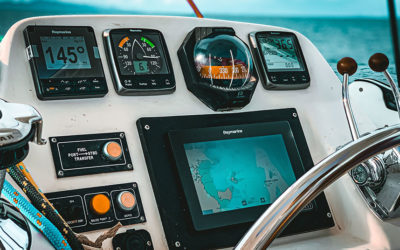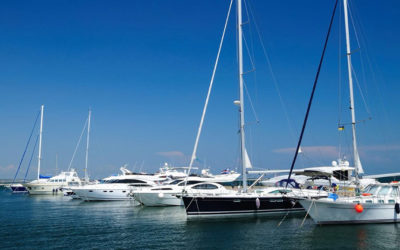Navigation used to be the exclusive domain of experienced experts who could not only read a nautical chart and analyse weather reports, but also construct a route using tools that are unknown to most of us. Times change, even in the world of yachting!
1. Yachting and its advances
The latest technological advances have made yachting more accessible, not only with regard to the platform – the boat and all of its essential accessories – but also with regard to navigation tools. This progress has been gradual, with the introduction of nautical charts (17th century), the sextant (18th century), and lastly, above all, the GPS (Garmin GPS 100 in 1991)!
2. The smartphone: a true ally
In 2018, you can quite happily navigate with the smartphone in your pocket. There are many apps offering increasingly advanced services. You can now find all the information needed for safe yachting in real time, right at your fingertips.
Which apps? How much do they cost? What do they do?
- « Météo “Météo Marine” (weather forecasts and maps)
- “Marine Imray Charts”
- “Navionics” (the best seller)
The last two incorporate many services, from very precise geolocating on a marine chart to navigation assistance.
The price is rather high (€60 for the chart of Europe from Navionics), but it is less expensive than buying all the marine charts covering the navigable waters of Europe (€30 per chart on average), and you will appreciate the amount of information that is available via the application.
With Navionics, you can download the chart for a specific one, load the weather charts illustrated with arrows of different thicknesses on the map, and find out the times of the tides and water depth at a particular time. Finally, it provides the optimum route between two points, A and B, avoiding any obstacles and shoals that might lie between them. This is all available without a connection, because GPS is a standalone technology that can operate in Airplane Mode as long as you have loaded the charts and weather forecasts into the application.
Rear Admiral Jean Cras, inventor of the Cras navigation plotter that was previously used to trace a route and determine a heading, will have to go back to his grave, because now a little box that fits in your pocket can calculate the ideal route for the navigator, without requiring any knowledge of geometry.
3. Limitations of the smartphone
We must however underline the hazards of this “Navigation 2.0” practice. The smartphone does not replace everything, especially in the context of sailing, where no licence or training is required, but which is still dangerous without some good nautical sense and theoretical knowledge of the boat and its environment.
Entering a canal on the wrong side or being on a collision course with a cargo vessel that weighs ten thousand times more that your own boat is generally inexcusable, and your smartphone is not (yet) capable of putting things back on an even keel.
Navigation is even more the province of experts when it takes place in busy and dangerous areas. Knowing how to anticipate a gust of wind, being aware of and accepting the risk of a sea trip, having the correct reaction to save a person who has fallen overboard, or using conventional means of communication (VHF radio) are all things that your smartphone can’t do for you. For example, it is unthinkable to track the route of your ship with your smartphone when lying in your bunk on automatic pilot without any active and visual presence on the bridge of the boat.
4. A smartphone, yes, but not only that…
Band of Boats invites you to read the article on “learning to navigate in a sailing boat: how to improve your technique” to discover our advice on how to be perfectly ready to go to sea.
So, yes, it is possible to navigate with just a smartphone. It is a tool that will make it easy and convenient for your to navigate, and will make you forget those long hours spent bending over a salt-damaged chart kit. But you can’t do this without knowing the rules of the sea and everything that makes a good sailor, bearing in mind that a phone battery doesn’t last forever.

